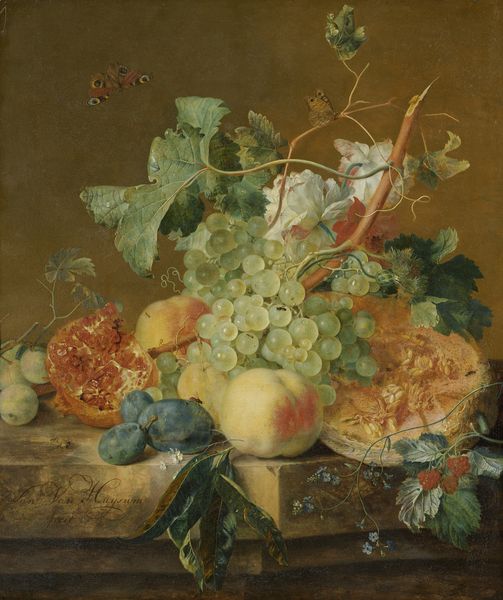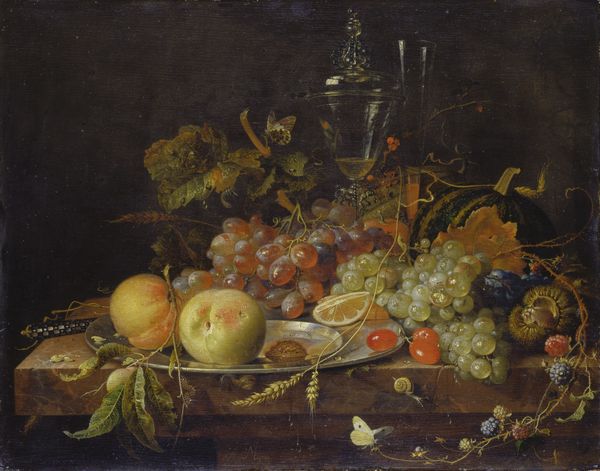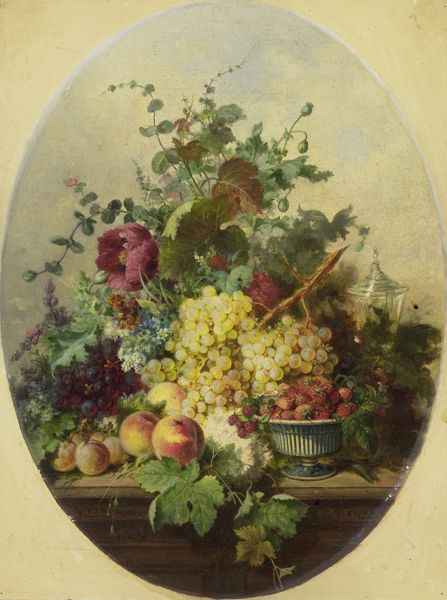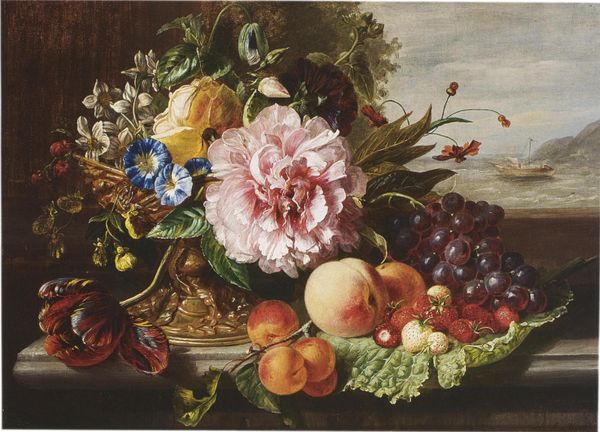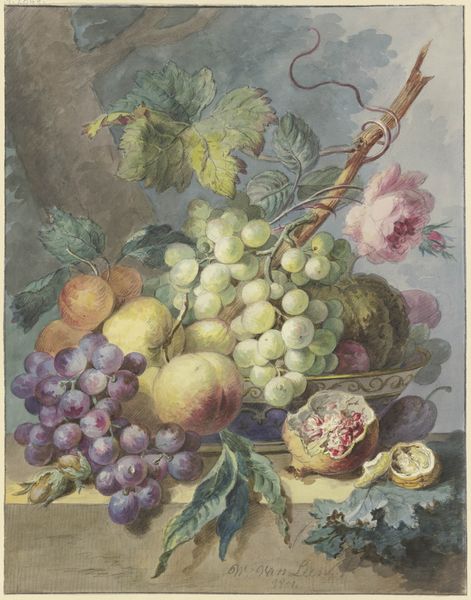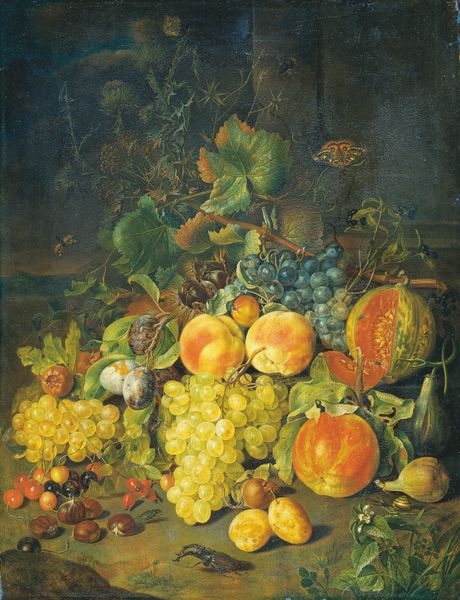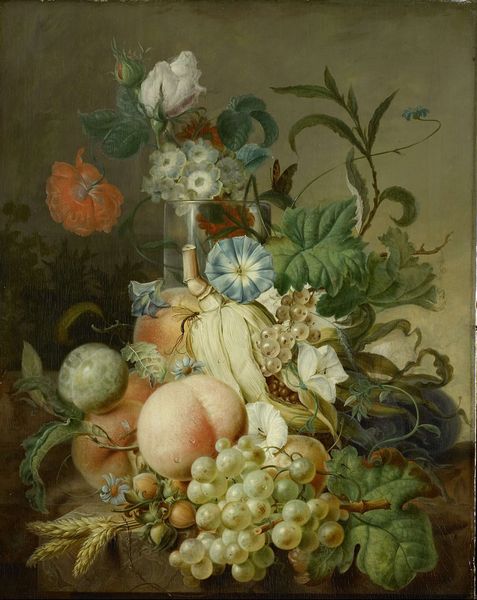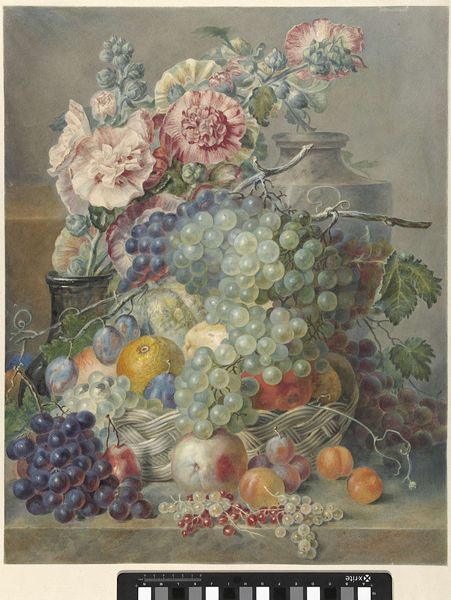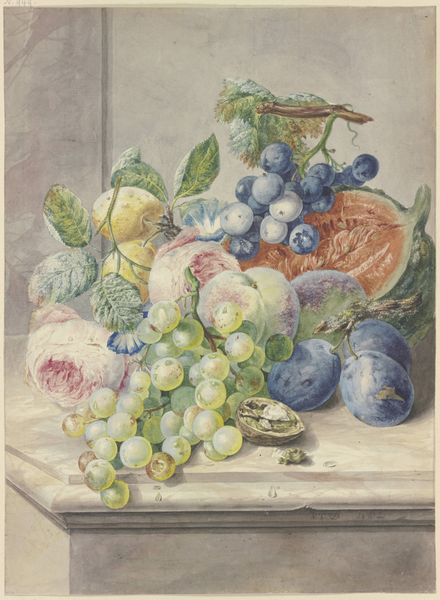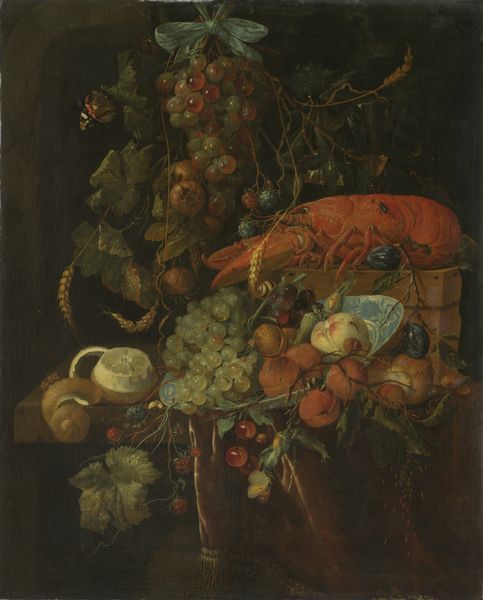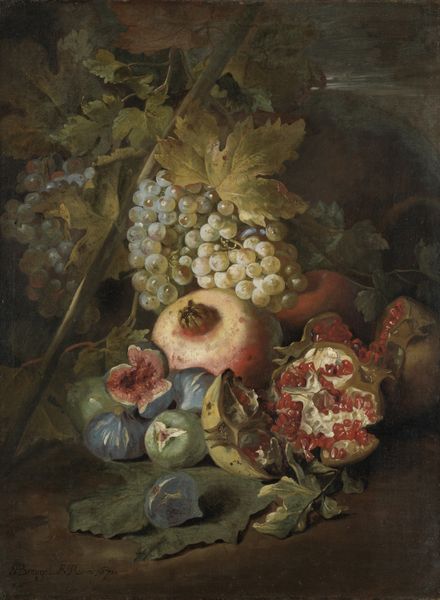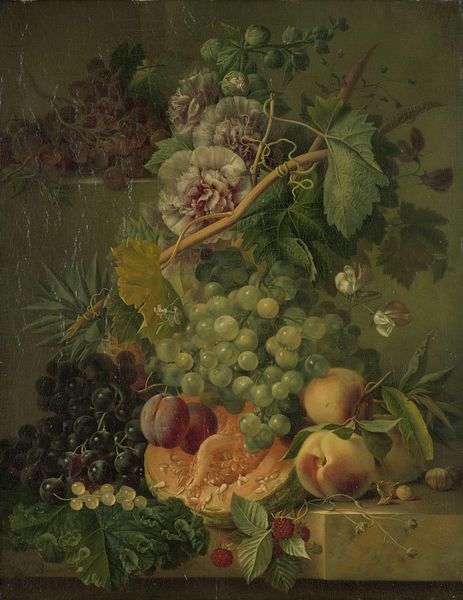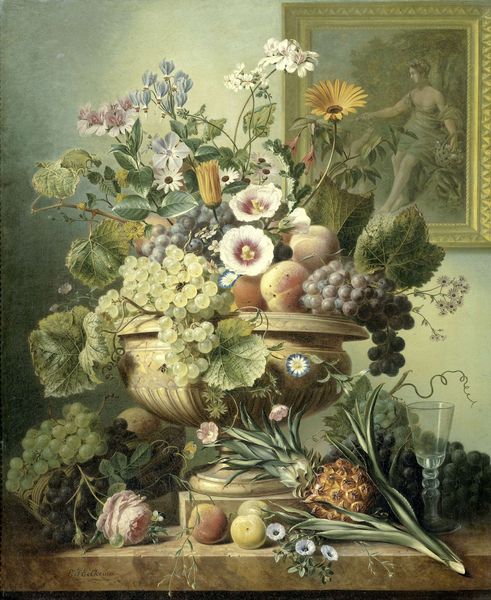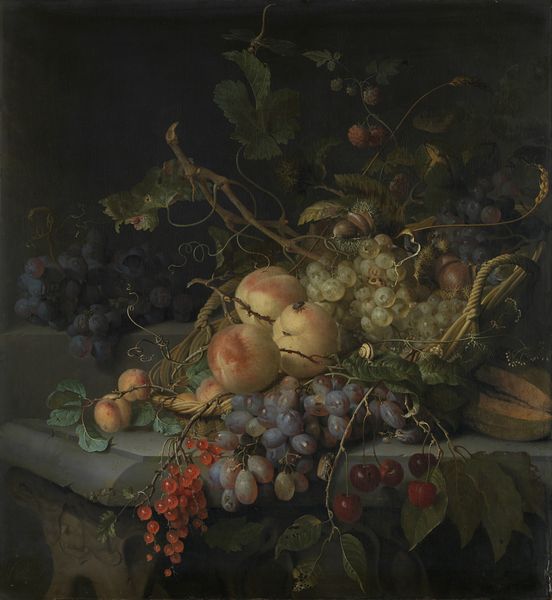
oil-paint
#
oil-paint
#
oil painting
#
fruit
#
romanticism
#
history-painting
Dimensions: height 91 cm, width 76 cm, depth 9.5 cm
Copyright: Rijks Museum: Open Domain
Editor: Here we have Eelke Jelles Eelkema's "Still Life with Flowers and Fruit," painted in 1824. It's an oil painting depicting exactly what the title suggests. What strikes me is how deliberately composed it feels, almost theatrical in its arrangement. What do you see in this piece? Curator: Beyond the surface, I see a reflection of early 19th-century societal values. Consider the Dutch tradition of still life, often laden with symbolism relating to wealth, morality, and the transient nature of life. Editor: So it's more than just pretty objects? Curator: Precisely. Look at the overflowing abundance. This was painted during a period of relative peace in the Netherlands after the Napoleonic Wars. Is this prosperity equally distributed, though? I see the artist hinting at these questions through careful arrangement, perhaps signaling both bounty and potential inequality. What about you? What does abundance signify within a political or societal structure? Editor: That's fascinating, I hadn't considered it in that context. I suppose I was drawn to the colours, but the subtext you are referring to sheds light on art as social commentary. Curator: Art provides us invaluable social and political insights into culture and societal hierarchies. The butterflies, for example, are visually attractive, yet historically represent transformation and the fleeting nature of existence, themes very relevant to discussions about privilege, power, and even vulnerability within early 19th century society. Editor: This piece really packs more than I thought into a still life! Now, the butterfly gives another perspective, and I am eager to analyze it further! Curator: Exactly. Each artwork acts as a cultural touchstone, reflecting and shaping our understanding of power and privilege.
Comments
No comments
Be the first to comment and join the conversation on the ultimate creative platform.
